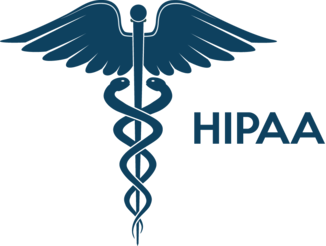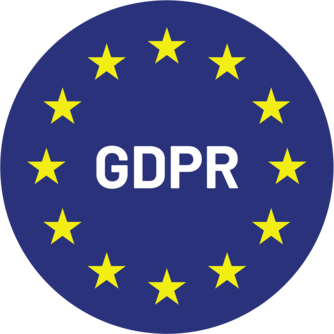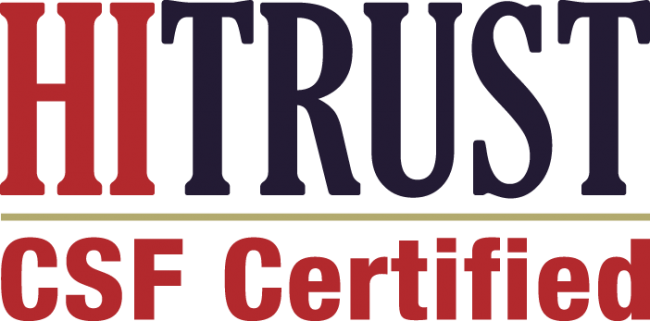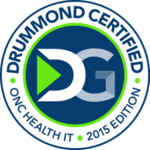The healthcare landscape has undergone a dramatic transformation in recent years, with Remote Patient Monitoring (RPM) emerging as a cornerstone of modern patient care delivery. For healthcare providers, Medicare’s comprehensive coverage of RPM services presents unprecedented opportunities to enhance patient outcomes while building sustainable revenue streams. This guide explores the multifaceted benefits of Medicare RPM and demonstrates how providers can successfully navigate this evolving terrain.
Understanding Medicare RPM: The Foundation
Remote Patient Monitoring allows patients to collect their own health data, including blood pressure, weight, glucose levels, and other vital signs, using connected medical devices that automatically transmit information to their healthcare providers. The Centers for Medicare & Medicaid Services (CMS) recognizes RPM as a legitimate, reimbursable service that bridges the gap between traditional in-person visits and continuous care management.
Medicare’s RPM coverage encompasses both the technological infrastructure and the clinical oversight necessary for effective remote monitoring. This dual approach ensures that providers can invest in sophisticated monitoring platforms while maintaining the human element essential for quality healthcare delivery.
The Current Medicare RPM Landscape: 2025 Updates
The 2025 Medicare updates have brought significant enhancements to RPM coverage and accessibility. For the first time, Rural Health Clinics and Federally Qualified Health Centers can now bill the RPM CPT codes just like other fee-for-service practices, dramatically expanding access to underserved populations.
RPM will allow providers to monitor a broader set of conditions, including chronic and acute conditions in different settings, moving beyond the traditional chronic disease focus to encompass a more comprehensive approach to patient care.
Key CPT Codes and Reimbursement Structure
Medicare RPM operates through four primary CPT codes, each addressing different aspects of remote monitoring:
Device Setup and Patient Education (CPT 99453) This code covers the initial setup of monitoring devices and comprehensive patient education on their proper use. The service includes device configuration, patient training, and establishing baseline parameters for monitoring.
Data Collection (CPT 99454) Covering the supply and technical support for monitoring devices, this code ensures continuous data collection over a minimum of 16 days within a 30-day period. Monitoring must occur over at least 16 days of a 30-day period for CPT codes 99453 and 99454 to be billed.
Treatment Management Services (CPT 99457) This represents the clinical interpretation and management of collected data, requiring a minimum of 20 minutes of clinical staff time per month. It encompasses data analysis, clinical decision-making, and care plan adjustments based on monitoring results.
Additional Treatment Management (CPT 99458) An add-on code for extended clinical management services, applicable when treatment management exceeds the base requirements of CPT 99457.
Clinical Benefits: Transforming Patient Care
Enhanced Chronic Disease Management
RPM has revolutionized chronic disease management by providing continuous visibility into patient health status. Providers can monitor conditions such as diabetes, hypertension, heart failure, and COPD with unprecedented precision, enabling early intervention before conditions deteriorate.
The continuous nature of RPM data collection reveals patterns and trends invisible during traditional episodic care visits. This granular insight allows providers to adjust medications, modify treatment plans, and prevent costly hospitalizations before acute episodes occur.
Improved Patient Engagement and Adherence
Remote monitoring transforms patients from passive recipients of care to active participants in their health management. The regular collection of vital signs creates a heightened awareness of health status, often leading to improved medication adherence and lifestyle modifications.
Patients report feeling more connected to their healthcare providers through RPM, as the continuous monitoring creates a sense of ongoing support and professional oversight. This psychological benefit often translates into measurable improvements in health outcomes.
Early Detection and Intervention
RPM’s greatest clinical value may lie in its ability to detect health deterioration before it becomes critical. Real-time alerts can notify providers of concerning trends, enabling timely interventions that prevent emergency room visits and hospitalizations.
For conditions like heart failure, where early detection of fluid retention can prevent decompensation, RPM monitoring can mean the difference between outpatient management and costly inpatient care.
Financial Benefits: Building Sustainable Revenue Streams
Direct Reimbursement Opportunities
Medicare RPM provides multiple revenue streams that can significantly impact practice profitability. When properly implemented, practices can expect substantial monthly recurring revenue from their RPM programs. Average increase of $105 per patient per month in successfully billed RPM services demonstrates the potential financial impact of well-managed RPM programs.
The predictable nature of RPM reimbursement allows practices to forecast revenue with greater accuracy than traditional fee-for-service models. This stability supports strategic planning and resource allocation decisions.
Operational Efficiency Gains
Beyond direct reimbursement, RPM creates significant operational efficiencies. 43% reduction in billing staff time devoted to RPM claims processing illustrates how streamlined RPM platforms can reduce administrative burden while improving revenue capture.
Automated data collection reduces the need for frequent in-person visits for routine monitoring, allowing providers to see more patients and focus clinical time on complex cases requiring direct intervention.
Reduced Hospital Readmissions
RPM’s impact on hospital readmission rates provides both clinical and financial benefits. By monitoring patients closely during post-discharge periods, providers can intervene early to prevent readmissions, avoiding potential penalties under Medicare’s readmission reduction programs.
The ability to monitor patients remotely also supports value-based care initiatives, as improved outcomes and reduced hospitalizations contribute to shared savings and quality bonuses.
Operational Benefits: Streamlining Practice Management
Workflow Integration
Modern RPM platforms integrate seamlessly with existing Electronic Health Record (EHR) systems, ensuring that monitoring data flows directly into patient records without disrupting established workflows. This integration eliminates the need for duplicate data entry and maintains comprehensive patient records.
Providers can access comprehensive patient dashboards, trend reports, and customizable alerts through unified interfaces, creating efficient workflows for monitoring large patient populations.
Scalability and Population Health Management
RPM enables providers to manage larger patient populations effectively by automating routine monitoring tasks. This scalability is particularly valuable for practices serving aging populations with multiple chronic conditions.
The technology allows a single provider to monitor hundreds of patients simultaneously, with automated alerts highlighting those requiring immediate attention. This efficiency multiplies the provider’s capacity while maintaining quality care standards.
Staff Productivity Enhancement
RPM redistributes clinical tasks, allowing high-skilled providers to focus on complex decision-making while support staff manages routine data collection and patient communication. This optimization improves job satisfaction and resource utilization across the practice.
Patient Benefits: Improving Health Outcomes and Experience
Convenience and Accessibility
RPM eliminates many barriers to healthcare access, particularly for patients with mobility limitations, transportation challenges, or those living in rural areas. Patients can receive continuous monitoring without frequent office visits, improving their quality of life while maintaining clinical oversight.
Personalized Care Delivery
Continuous monitoring enables truly personalized care, as providers can tailor interventions based on individual patient patterns and responses. This precision approach often leads to better outcomes than standardized treatment protocols.
Peace of Mind
Many patients report reduced anxiety about their health conditions when participating in RPM programs. The knowledge that their vital signs are being continuously monitored and that their healthcare provider will be notified of concerning changes provides significant psychological comfort.
Implementation Strategies: Setting Up for Success
Technology Selection Criteria
Successful RPM implementation begins with selecting the right technology platform. Providers should evaluate platforms based on:
- EHR integration capabilities
- Device compatibility and reliability
- Data security and HIPAA compliance
- User interface design for both patients and staff
- Billing and revenue cycle management features
- Clinical decision support capabilities
- Scalability and customization options
Staff Training and Development
Healthcare providers require comprehensive training on RPM technology utilization, data interpretation, and patient communication strategies. This includes understanding reimbursement requirements, documentation standards, and clinical decision-making protocols based on remote data.
Effective training programs should cover technical aspects of the RPM platform, clinical protocols for data interpretation, and patient communication strategies for remote care delivery.
Patient Onboarding Processes
Successful RPM adoption depends heavily on patient engagement and technology acceptance. Health systems must develop comprehensive patient education programs covering device usage, data transmission protocols, and health goal setting.
Structured onboarding processes should include device setup, usage training, expectation setting, and ongoing support mechanisms to ensure patient success with the technology.
HealthViewX RPM: A Comprehensive Solution
In the crowded RPM platform market, HealthViewX distinguishes itself as a comprehensive solution that addresses the full spectrum of provider needs. HealthViewX can assist providers to seamlessly implement virtual solutions such as RPM into their practice. HealthViewX RPM platform helps providers transform their practice, and keep up with the radical changes in the healthcare industry.
Advanced Analytics and Clinical Intelligence
What sets HealthViewX RPM apart is its sophisticated analytics engine that transforms raw health data into actionable clinical insights. The platform uses advanced algorithms to identify trends, detect anomalies, and predict potential health issues before they become critical.
This predictive capability enables proactive interventions that improve outcomes while reducing costs, aligning with Medicare’s focus on value-based care delivery.
Integrated Multi-Condition Management
The platform’s ability to handle multiple data streams simultaneously makes it particularly valuable for patients with multiple chronic conditions, a common scenario among Medicare beneficiaries. Rather than managing separate monitoring systems for different conditions, patients and providers can access all relevant health data through a single, integrated platform.
This comprehensive approach reduces complexity for both patients and providers while ensuring holistic care coordination.
Seamless EHR Integration
HealthViewX integrates seamlessly with existing EHR systems, ensuring that RPM data flows directly into patient records without disrupting established workflows. Clinicians can access comprehensive patient dashboards, trend reports, and customizable alerts through a single interface.
Proven Results and ROI
HealthViewX users report significant improvements in both clinical and financial outcomes. 89% first-pass claim acceptance rate for RPM codes (compared to the industry average of 70%) ROI of 4:1 within the first year of implementation demonstrates the platform’s effectiveness in translating RPM investment into tangible returns.
Comprehensive Support and Training
Beyond technology, HealthViewX provides extensive implementation support, including staff training, patient education materials, and ongoing technical assistance. This comprehensive approach ensures successful adoption and optimal utilization of RPM capabilities.
Compliance and Regulatory Considerations
CMS Requirements and Documentation
Medicare RPM success requires strict adherence to CMS guidelines and documentation requirements. Patient consent is required at the time RPM is furnished. Physiologic data must be electronically collected and automatically uploaded to a secure location where the data can be available for analysis and interpretation by the billing practitioner.
Providers must maintain detailed documentation of patient consent, device setup, data collection periods, clinical interpretation activities, and patient communications to support billing and audit requirements.
HIPAA and Data Security
RPM platforms must maintain the highest standards of data security and patient privacy protection. Providers should ensure their chosen platform includes robust encryption, access controls, audit trails, and incident response procedures.
Quality Measures and Reporting
Medicare’s focus on quality-based reimbursement extends to RPM services. Providers should establish quality metrics for their RPM programs and maintain documentation supporting improved patient outcomes and reduced healthcare utilization.
Future Outlook: The Evolution of Medicare RPM
Market Growth and Adoption Trends
The global RPM market was valued at $11.1 billion in 2022 and is expected to grow at a CAGR of 18.2%, reaching $45 billion by 2030. In the U.S., the Medicare RPM adoption rate has surged by over 57% since 2020, demonstrating the increasing reliance on digital health solutions.
This rapid growth reflects both technological advancement and regulatory support for remote care delivery models.
Emerging Technologies and Capabilities
Several trends are shaping RPM reimbursement: Increasing focus on RPM for behavioral health conditions, Expansion of covered device types and monitoring parameters, Greater emphasis on outcome documentation.
Value-Based Care Integration
Medicare’s continued evolution toward value-based payment models positions RPM as a critical tool for success in accountable care organizations, Medicare Advantage plans, and other risk-bearing arrangements.
Getting Started: Implementation Roadmap
Assessment and Planning Phase
Begin with a comprehensive assessment of your patient population, identifying those who would benefit most from RPM services. Develop implementation timelines, budget projections, and staffing plans to support the program launch.
Technology Evaluation and Selection
Evaluate RPM platforms based on your specific needs, focusing on clinical capabilities, integration requirements, and financial performance features. Consider platforms like HealthViewX that offer comprehensive solutions with proven track records.
Staff Training and Process Development
Invest in comprehensive staff training and develop standardized processes for patient enrollment, device management, data interpretation, and billing compliance.
Pilot Program Launch
Start with a small group of patients to test processes and refine workflows before scaling to larger populations. Use pilot results to optimize operations and demonstrate value to stakeholders.
Scale and Optimize
Gradually expand your RPM program based on pilot results, continuously monitoring clinical outcomes, financial performance, and patient satisfaction to drive ongoing improvements.
Conclusion: Embracing the Future of Healthcare Delivery
Medicare RPM represents more than just a reimbursement opportunity, it’s a fundamental shift toward more effective, efficient, and patient-centered care delivery. For providers willing to invest in proper implementation, RPM offers the potential to improve patient outcomes, enhance operational efficiency, and build sustainable revenue streams.
Success in Medicare RPM requires the right combination of technology, processes, and clinical expertise. Platforms like HealthViewX provide the comprehensive solutions necessary to navigate this complex landscape successfully, offering providers the tools and support needed to transform their practice and improve patient care.
The future of healthcare is increasingly digital, and providers who embrace RPM now will be best positioned to thrive in this evolving environment. By understanding the benefits, requirements, and opportunities within Medicare RPM, providers can make informed decisions that benefit both their patients and their practices.
As we move forward, the integration of artificial intelligence, expanded device capabilities, and enhanced analytics will further increase RPM’s value proposition. Providers who establish strong RPM programs today will have the foundation necessary to capitalize on these future innovations, ensuring their long-term success in an increasingly digital healthcare ecosystem.
The time to act is now. With Medicare’s strong support for RPM services, comprehensive reimbursement opportunities, and platforms like HealthViewX offering turnkey solutions, providers have never had a better opportunity to transform their practice through remote patient monitoring.



